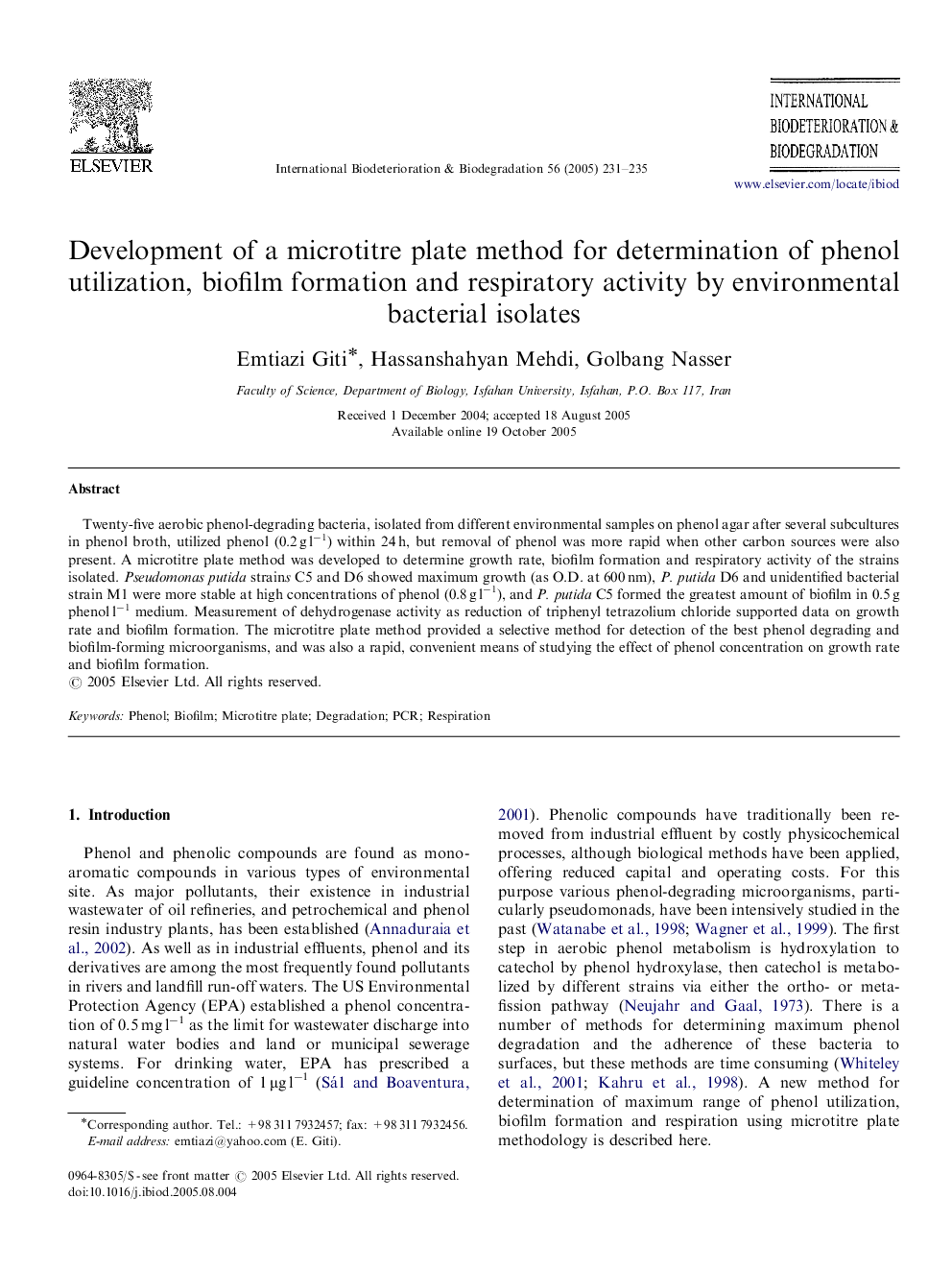| Article ID | Journal | Published Year | Pages | File Type |
|---|---|---|---|---|
| 9442162 | International Biodeterioration & Biodegradation | 2005 | 5 Pages |
Abstract
Twenty-five aerobic phenol-degrading bacteria, isolated from different environmental samples on phenol agar after several subcultures in phenol broth, utilized phenol (0.2 g lâ1) within 24 h, but removal of phenol was more rapid when other carbon sources were also present. A microtitre plate method was developed to determine growth rate, biofilm formation and respiratory activity of the strains isolated. Pseudomonas putida strains C5 and D6 showed maximum growth (as O.D. at 600 nm), P. putida D6 and unidentified bacterial strain M1 were more stable at high concentrations of phenol (0.8 g lâ1), and P. putida C5 formed the greatest amount of biofilm in 0.5 g phenol lâ1 medium. Measurement of dehydrogenase activity as reduction of triphenyl tetrazolium chloride supported data on growth rate and biofilm formation. The microtitre plate method provided a selective method for detection of the best phenol degrading and biofilm-forming microorganisms, and was also a rapid, convenient means of studying the effect of phenol concentration on growth rate and biofilm formation.
Related Topics
Life Sciences
Environmental Science
Environmental Science (General)
Authors
Emtiazi Giti, Hassanshahyan Mehdi, Golbang Nasser,
